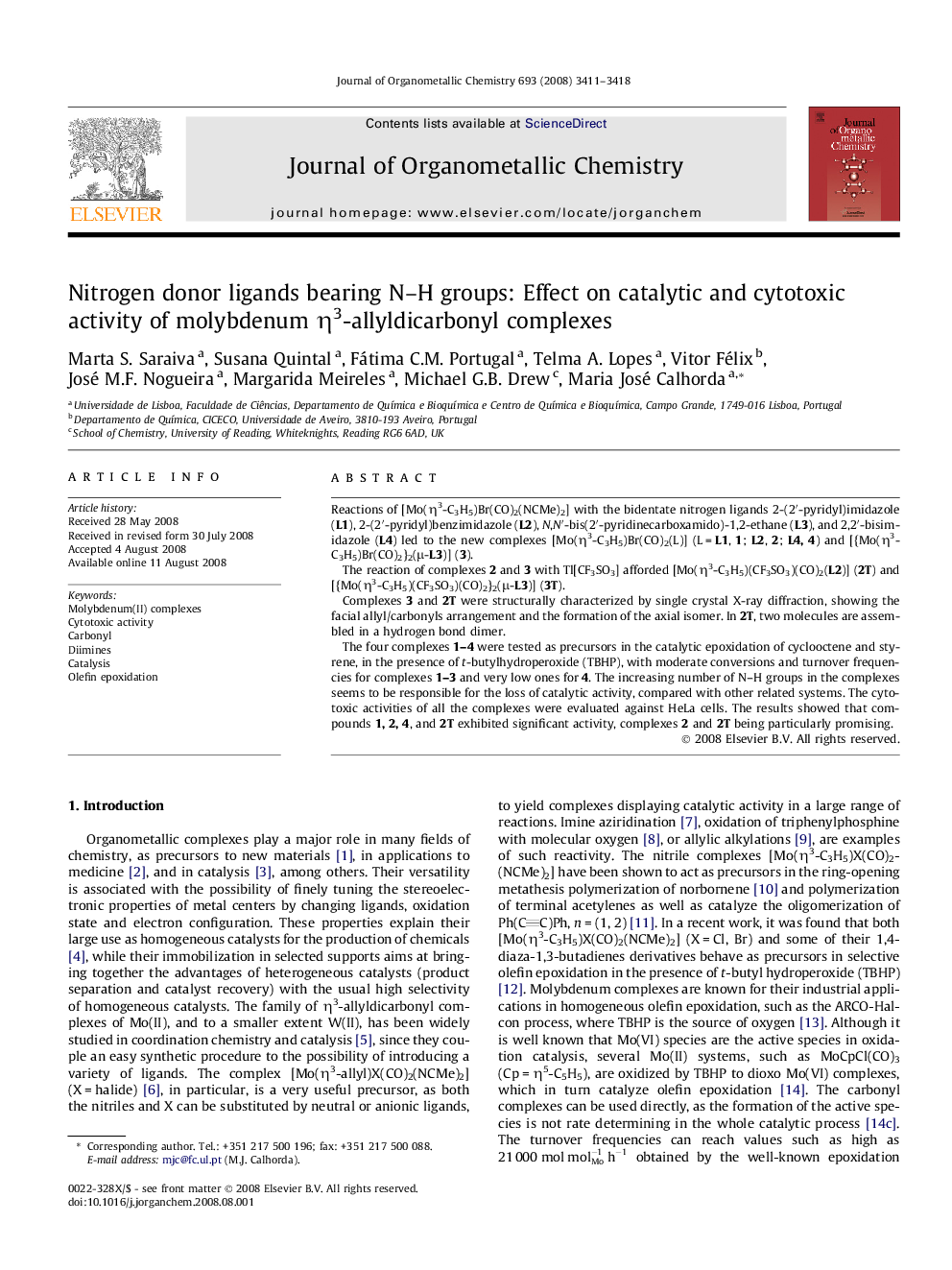| Article ID | Journal | Published Year | Pages | File Type |
|---|---|---|---|---|
| 1325632 | Journal of Organometallic Chemistry | 2008 | 8 Pages |
Reactions of [Mo(η3-C3H5)Br(CO)2(NCMe)2] with the bidentate nitrogen ligands 2-(2′-pyridyl)imidazole (L1), 2-(2′-pyridyl)benzimidazole (L2), N,N′-bis(2′-pyridinecarboxamido)-1,2-ethane (L3), and 2,2′-bisimidazole (L4) led to the new complexes [Mo(η3-C3H5)Br(CO)2(L)] (L = L1, 1; L2, 2; L4, 4) and [{Mo(η3-C3H5)Br(CO)2}2(μ-L3)] (3).The reaction of complexes 2 and 3 with Tl[CF3SO3] afforded [Mo(η3-C3H5)(CF3SO3)(CO)2(L2)] (2T) and [{Mo(η3-C3H5)(CF3SO3)(CO)2}2(μ-L3)] (3T).Complexes 3 and 2T were structurally characterized by single crystal X-ray diffraction, showing the facial allyl/carbonyls arrangement and the formation of the axial isomer. In 2T, two molecules are assembled in a hydrogen bond dimer.The four complexes 1–4 were tested as precursors in the catalytic epoxidation of cyclooctene and styrene, in the presence of t-butylhydroperoxide (TBHP), with moderate conversions and turnover frequencies for complexes 1–3 and very low ones for 4. The increasing number of N–H groups in the complexes seems to be responsible for the loss of catalytic activity, compared with other related systems. The cytotoxic activities of all the complexes were evaluated against HeLa cells. The results showed that compounds 1, 2, 4, and 2T exhibited significant activity, complexes 2 and 2T being particularly promising.
Graphical abstractNew complexes [Mo(η3-C3H5)Br(CO)2(N-N)], where N–N are several bidentate nitrogen ligands with N–H groups, were synthesized and characterized. They are active precursors for olefin epoxidation in the presence of TBHP and some of them exhibit cytotoxic activity against human carcinomic strain cells.Figure optionsDownload full-size imageDownload as PowerPoint slide
